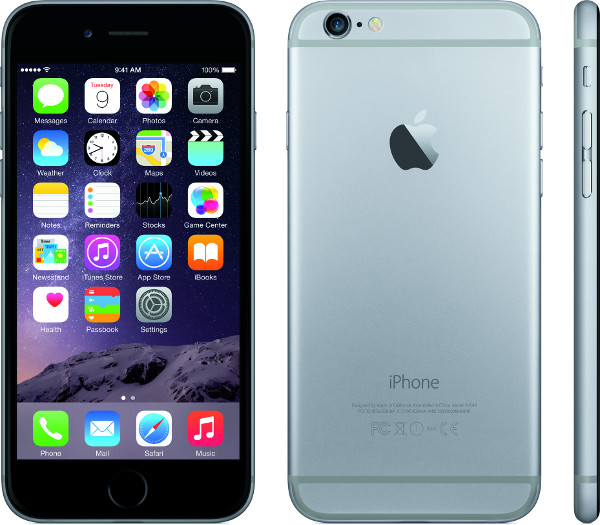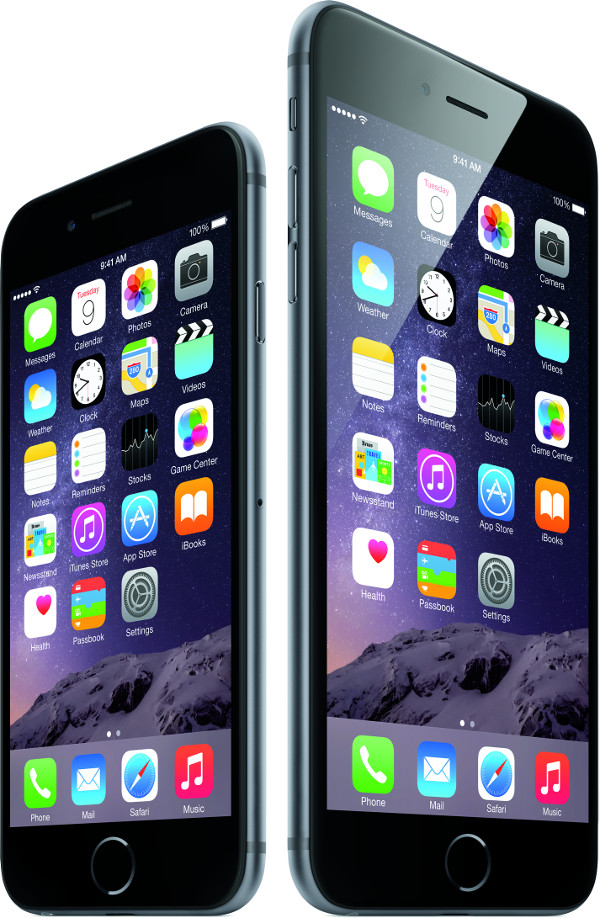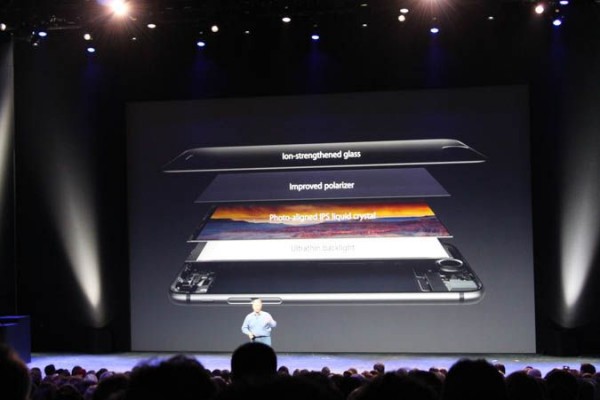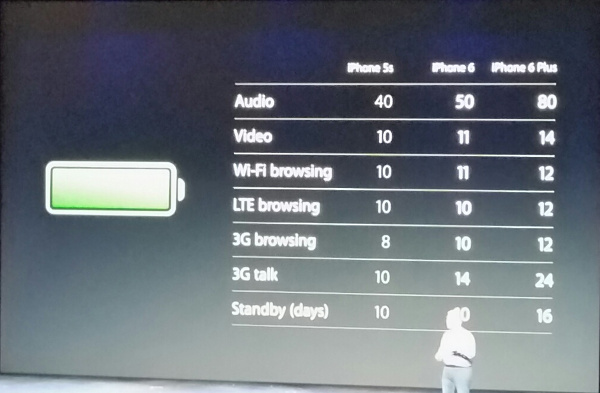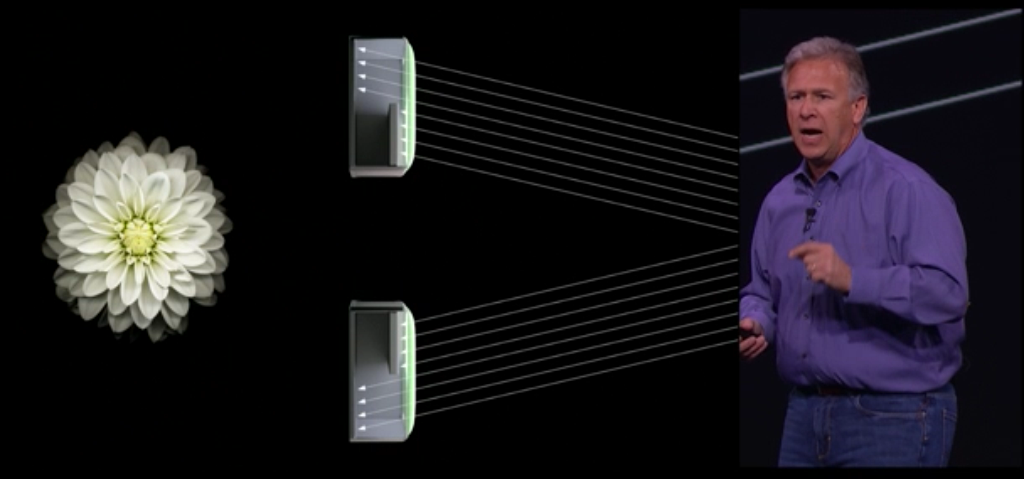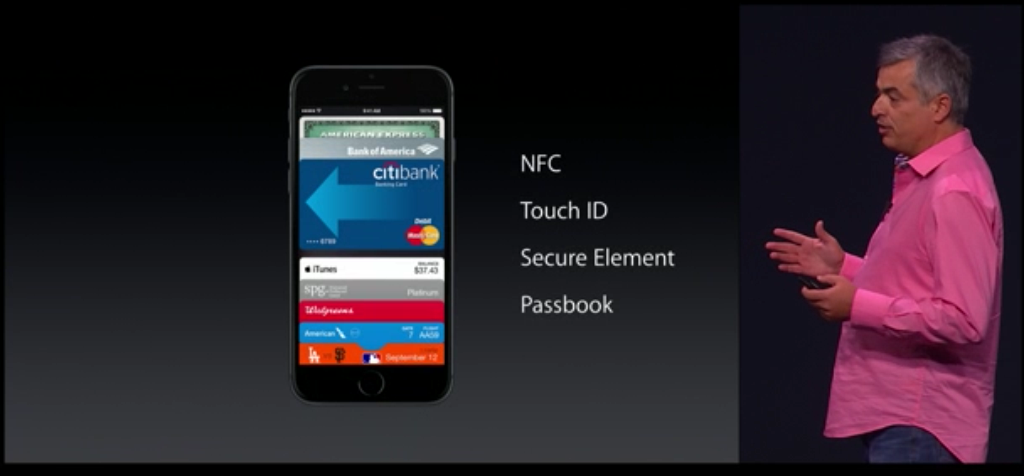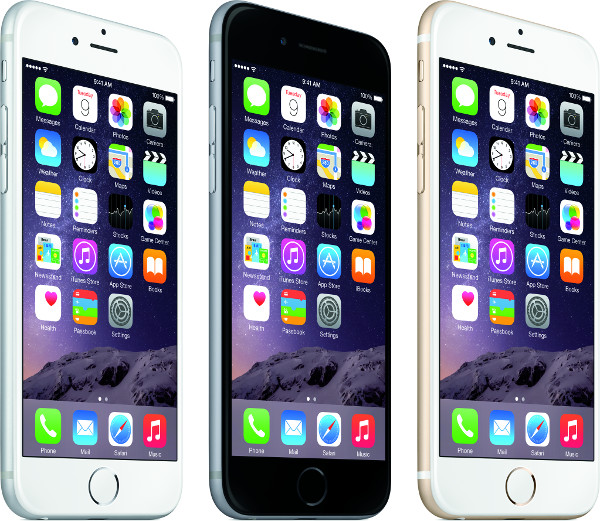Apple Beefs Up, Tunes Up iPhone Hardware
Apple delivered everything we expected during its product launch event today in Cupertino, proving that not only is Apple CEO Tim Cook's administration more porous — perhaps on purpose — but that it is also growing more ambitious. There were two new iPhones (iPhone 6 and iPhone 6 Plus), and the much-anticipated Apple Watch, and a fairly comprehensive mobile wallet scheme, called Apple Pay.
While the Apple Watch had the typical Apple wow factor, both in design simplicity and elegance (at least as smartwatches go), and Apple Pay delivered on a simplified and secure contactless payment system, the iPhone 6 did offer a few solid updates, even if some of the important details under the hood are still unknown. For Apple fans the iPhone 6 may be a benediction, or further support for continued fawning. For those waffling or migrating, it might actually justify a move back. But there are too many unanswered questions to jump to conclusions.
In the iPhone 5s Apple revved all of its engines, but still housed them in an itty bitty living space. This time around, with the iPhone 6, the company tuned up a bit more under the hood, some of it in less obvious ways, but much of it to support a complete re-do of its overall chassis.
The biggest and least surprising change is that Apple is changing the iPhone size. Before, you could get any size you wanted, as long as it was four inches. Now, you can get them in 4.7 (iPhone 6) and 5.5 inches (iPhone 6 Plus). The phone edges are rounded, and the overall device is smoother and slimmer than the iPhone 5s (6.9mm and 7.1mm for the iPhone 6 and 6 Plus, respectively, vs the 7.6mm thickness of the 5s), and surprising light for its size at 4.55 ounces, or 129 grams for the iPhone 6, and 6.07 ounces/172 grams for the iPhone 6 Plus (vs 3.9 ounces for the 5s). [A quick video walk through of the iPhone 6 and 6 Plus is embedded at the bottom of this page.]
The screen resolution is now 1334 x 750 for the iPhone 6, at a pixel density of 326 ppi, and 1920 x 1080 at 401 ppi. Apple calls this Retina HD, for whatever that terms is still worth in pixel battles. The iPhone 5s has a 16:9 aspect ratio and a resolution of 1136 x 640. The big questions here, then, revolve around how Apple has scaled all of this, and whether that will leave any noticeable artifacts in apps, especially apps that haven't been updated for the latest sizes, and games in particular.
When Apple moved to retina displays originally, it used a 2x scalar. Apple is using a scalar again here, and it looks like the 4.7-inch iPhone 6 has a 1.17x multiplier (over the 5s resolution). This could impact bitmap graphics, at least initially, and will require some GPU heavy lifting. The 5.5-inch iPhone 6 Plus has almost three times as many pixels compared with the 5s, which means even more work for the GPU. In our brief hands on with the devices, we couldn't see any artifacts, but we also didn't expect to see any on preloaded devices, especially on mostly static app experiences (like CNN and BBC and MLB) and we were forbidden to download any older apps.
Apple didn't talk about any changes to the screen panel design, and Apple didn't talk GPU details, other than to say the GPU was 50% faster than the one in the 5s. That GPU is part of another announcement we expected, the A8 SoC. When Apple came out with its 5s, the company shocked everyone with the A7, the very first (and still only) SoC based on the 64-bit ARMv8 ISA, with the Cyclone CPU core, running at 1.3 GHz.
Get Tom's Hardware's best news and in-depth reviews, straight to your inbox.
The A8 uses a 20nm process, as we expected it might, and Apple claims it is 25% faster than the iPhone 5s CPU. We're not sure if there was a clock bump, or any other underlying changes. Apple was tight lipped about details after the event.
We were wondering if the A8 would use the newest PowerVR GX6650 to match Nvidia's Kepler and and Qualcomm's Adreno 420, or even ARM's Mali-T6xx. The PowerVR Series 6 is already what's in the Apple A7. Usually Apple doubles GPU performance each year, and since this is only 50% higher it may just be the same as the one in the 5s, with more cores, or higher frequency.
The iPhone 6 is 50% more energy efficient, Apple said, and claimed that its ARMv8 doesn't throttle performance the way other SoCs will, providing for more sustained performance over time. This will continue to be a battleground in the next evolution of 64-bit SoCs.
The company also talked about its new graphics library, called Metal, for 3D apps and games, the idea being that developers can get closer to the metal without the performance penalties of higher level APIs like OpenGL. Disney, Unity, EA and Gameloft, among many others, are using Metal, and Apple brought out Super Evil Megacorp to show off Vain Glory, a battle arena mutiplayer game designed for smartphone touch experiences.
Apple's M7 co-processor — essentially a hub for managing sensor activity — also got an upgrade to M8. Among other improvements, M8 allows the iPhone 6 to estimate distance, and, using a new barometer built into the phone, also detect relative elevation using the air pressure.
One glaring disappointment: Apple did not mention whether it was moving up from the 1GB LPDDR3 in the iPhone 5s, which could mean that it didn't see the need to change this. Actually, this memory has been around for two generations of iPads and iPhones, and the move to a bigger screen size, as well as the coming onslaught of 64-bit binaries, seems to dictate a change here soon — we thought soon would be now. We'll see if Apple has more to say here.
Apple promised that battery life wouldn't recede, and should get better — 24 hours of talk time on 3G, web and other Internet use up to 12 hours on LTE, 14 hours of video playback. Again, we shall see.
Many of us were expecting Apple to step it up on the connectivity and communications side, and for the most part we weren't disappointed here. First, the new iPhones will support 802.11ac, and LTE Category 4. The latter will bring 150Mbps theoretical speeds (but not the expected 300Mbps speeds of LTE Category 6), and carrier aggregation. In short, every communication will be faster. Apple supports 20 LTE bands, which the company said covers over 200 LTE carriers. Using VoLTE (voice over LTE), voice calls can be moved from 3G to 4G for better quality. Apple also supports WiFi calling, with seamless hand off between the mobile network and WiFi — this will actually only be available with T-Mobile in the U.S. for now.
As always, Apple continued to step things up on the camera. This is still an 8MP iSight, with True Tone flash. But it has a new sensor, featuring what Apple calls Focus Pixels, which is the company's phase detection auto focus. Apple claimed the camera can focus twice as fast as previous generation iPhones. It also includes improvements in things like local tone mapping and advanced noise reduction. Apple also bumped up the resolution on panoramic photos, and the camera uses the gyro for seamless stitching to create the image.
Apple includes an image signal processor in the A8, and it includes a hardware block just for face detection, for example. It also includes advanced blink and smile detection for better burst mode photo selection. Even the front facing camera, which got its own improvements, can do burst mode selfies. God help us all.
The iPhone 6 includes digital image stabilization, but the iPhone 6 Plus gets optical image stabilization, and that can move front to back, up and down, and side to side. It works with the M8 co-processor and gyro to adjust and focus images. Oh if only OIS was in the smaller iPhone 6!
Much of this improvement also finds its way into video capabilities. For example, in the iPhone 5s you could capture slow motion video up to 120fps, but with the iPhone 6 you can get up to 240fps. Focus Pixels lets you auto focus continuously while you're taking video. I saw some of this in action in brief hands-on demos, and it was pretty remarkable — as always, Apple puts a great deal of thought into camera innovation, especially in the connection between the software and the hardware capabilities.
In another expect move, Apple has included an NFC radio antenna across the top of the phone to support contactless payments. The phone includes a Secure Elements chip, which stores all of your payment information in an encrypted form. You keep your credit cards, reward cards and so forth in Apple Passbook. Apple Pay combines the use of the TouchID, the Secure Element, Passbook and NFC. Secure Element creates a one-time payment number, using dynamic security codes – so essentially you've got one-time token for security. None of your private information gets stored on the phone, and Apple has no knowledge of the details of your transaction.
The phone is available for pre-order this Friday, Sept 12, and will ship on Sept 19. There are 16, 64 and 128GB configurations, and the iPhone 6 (in gold, silver and space grey) goes for $199, $299, and $399 respectively (with a two year contract). The iPhone 6 Plus (same colors) starts at $299, $399, and $499. They will ship to the U.S. and eight other countries, with a goal of 115 countries by the end of 2014. The iPhone 5s will now be $99 and an 8GB iPhone 5C will be free on contract.
-
turkey3_scratch The only thing I really like about the iPhone 6 is the larger size. Otherwise, I would care less. I love the iWatch! So much better than Google Glasses.Reply -
iKon007 Hahahaha 8mp Camera?? Awesome, I turned my 13mp camera down to get 16:9 photos and its still 10mp and better than the latest greatest offering from the Apple Gods.Reply
I read in another article that the displays were like retina on steroids (Clearly an ijerkoff boi), again totally awesome, just as awesome as my 2 year old HTC Butterfly that had Full HD 5 inch screen. Now I've got a QHD phone and its older than the ip6!
I'm sure I remember ifans saying that anything bigger than an iPhone was pointless and would be too hard to use and live with... I'm sure I heard that being sprouted by them... Now those bigger sizes will be the best thing since sliced bread no doubt!
I cant believe people are still in raptures about this company and their products! Apple are clearly playing catching and obviously failing at that! Check out the Oppo Find 7 if you want a properly specced phone! -
turkey3_scratch Reply
I personally don't care for any phone, but yes the Apple cult I know what you mean.14143224 said:Hahahaha 8mp Camera?? Awesome, I turned my 13mp camera down to get 16:9 photos and its still 10mp and better than the latest greatest offering from the Apple Gods.
I read in another article that the displays were like retina on steroids (Clearly an ijerkoff boi), again totally awesome, just as awesome as my 2 year old HTC Butterfly that had Full HD 5 inch screen. Now I've got a QHD phone and its older than the ip6!
I cant believe people are still in raptures about this company and their products! Apple are clearly playing catching and obviously failing at that! Check out the Oppo Find 7 if you want a properly specced phone!
-
turkey3_scratch Reply
Yes the iWatch really looks something I want! Only problem is I don't have an iPhone :(14143266 said:The only thing I really like about the iPhone 6 is the larger size. Otherwise, I would care less. I love the iWatch! So much better than Google Glasses.
Um what? Comparing Google Glass to the Apple Watch makes zero sense. I was against 5"+ screens due to battery life but since the 6 Plus will have outstanding battery life without having to cripple it, alla Android devices, I'll be per-ordering the 6 Plus 64gb. Apple Pay is very intriguing and will all the hacks going on lately it was nice to see my bank send me an email right after Apple's event and tell me their mobile app will be integrated with Apple Pay. Apple did it right in getting the major CC companies, retailers and banks on board before even announcing it. This is why all other touch payment systems have failed in the US. If I had the 5s I don't think it's worth upgrading to the 6 maybe 6 Plus if you wanted a bigger screen. I've had the 5 since it came out so it's time upgrade and the 6 plus is worthy upgrade.
I think it Apple did right with the Apple Watch but I more than likely won't be getting one. If it goes on sale or something in a year for >$299 maybe but it's not worth it to me.
-
esco_sid ReplyHahahaha 8mp Camera?? Awesome, I turned my 13mp camera down to get 16:9 photos and its still 10mp and better than the latest greatest offering from the Apple Gods.
I read in another article that the displays were like retina on steroids (Clearly an ijerkoff boi), again totally awesome, just as awesome as my 2 year old HTC Butterfly that had Full HD 5 inch screen. Now I've got a QHD phone and its older than the ip6!
I'm sure I remember ifans saying that anything bigger than an iPhone was pointless and would be too hard to use and live with... I'm sure I heard that being sprouted by them... Now those bigger sizes will be the best thing since sliced bread no doubt!
I cant believe people are still in raptures about this company and their products! Apple are clearly playing catching and obviously failing at that! Check out the Oppo Find 7 if you want a properly specced phone!
You clearly know nothing about cameras to make such a statement as more pixels= better quality picture we all know that is to be true right?
-
velocityg4 16GB storage and no waterproofing. Regretfully I'll switch to Android. $750 is already tough to swallow for the iPhone 6 plus. The lack of essential features at that price point and what is likely 1GB of RAM put the final nails in the coffin.Reply -
AMD Radeon ReplyI had 1080p a 5.5 inch screen and 8mp camera 2 years ago, nothing new here.
most apple consumers are hipsters. they live in the past
-
shaun_shaun so few days ago toms published an article saying "all the new motorola products are flawed" how about these overpriced new Apple lineup?Reply
